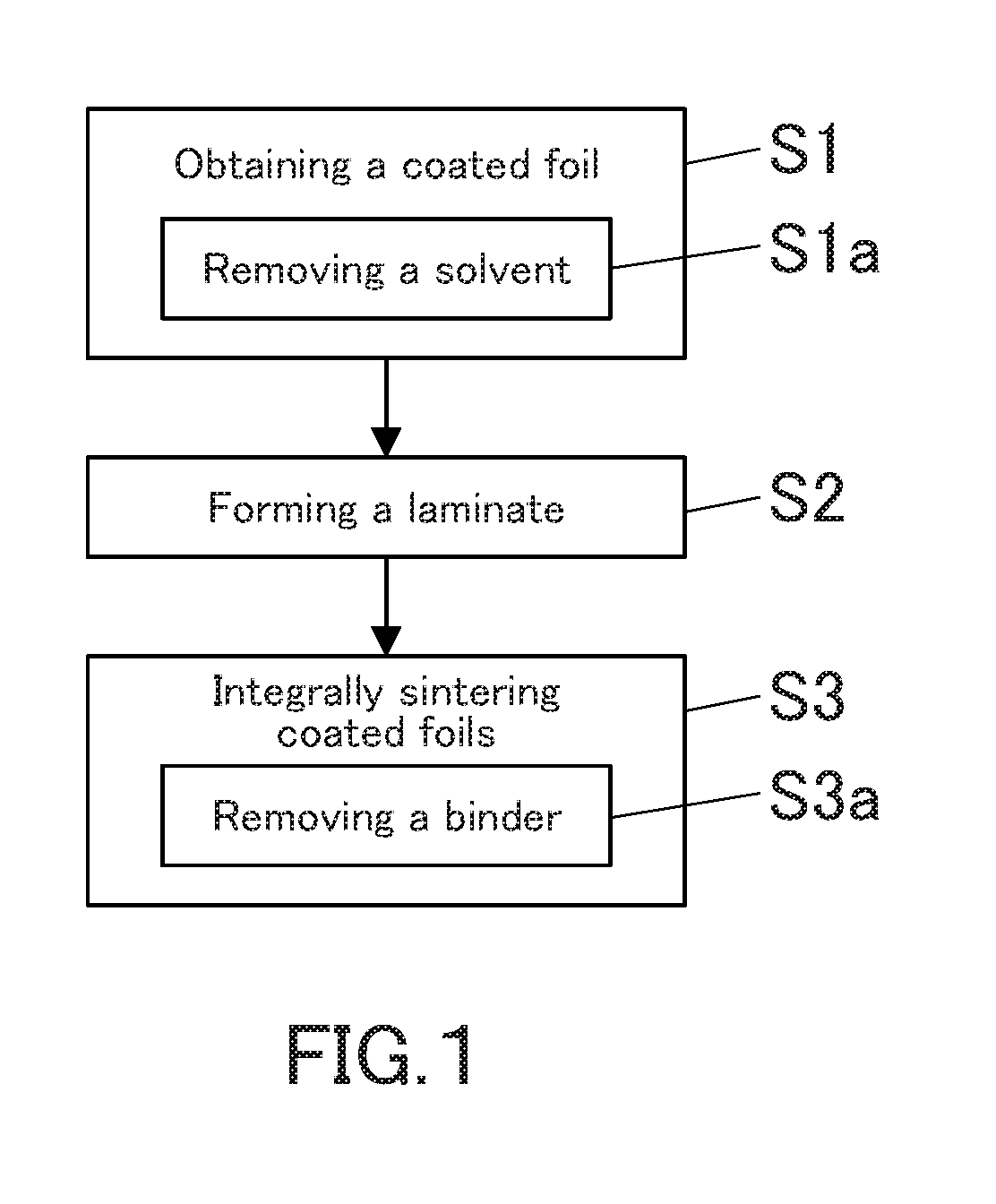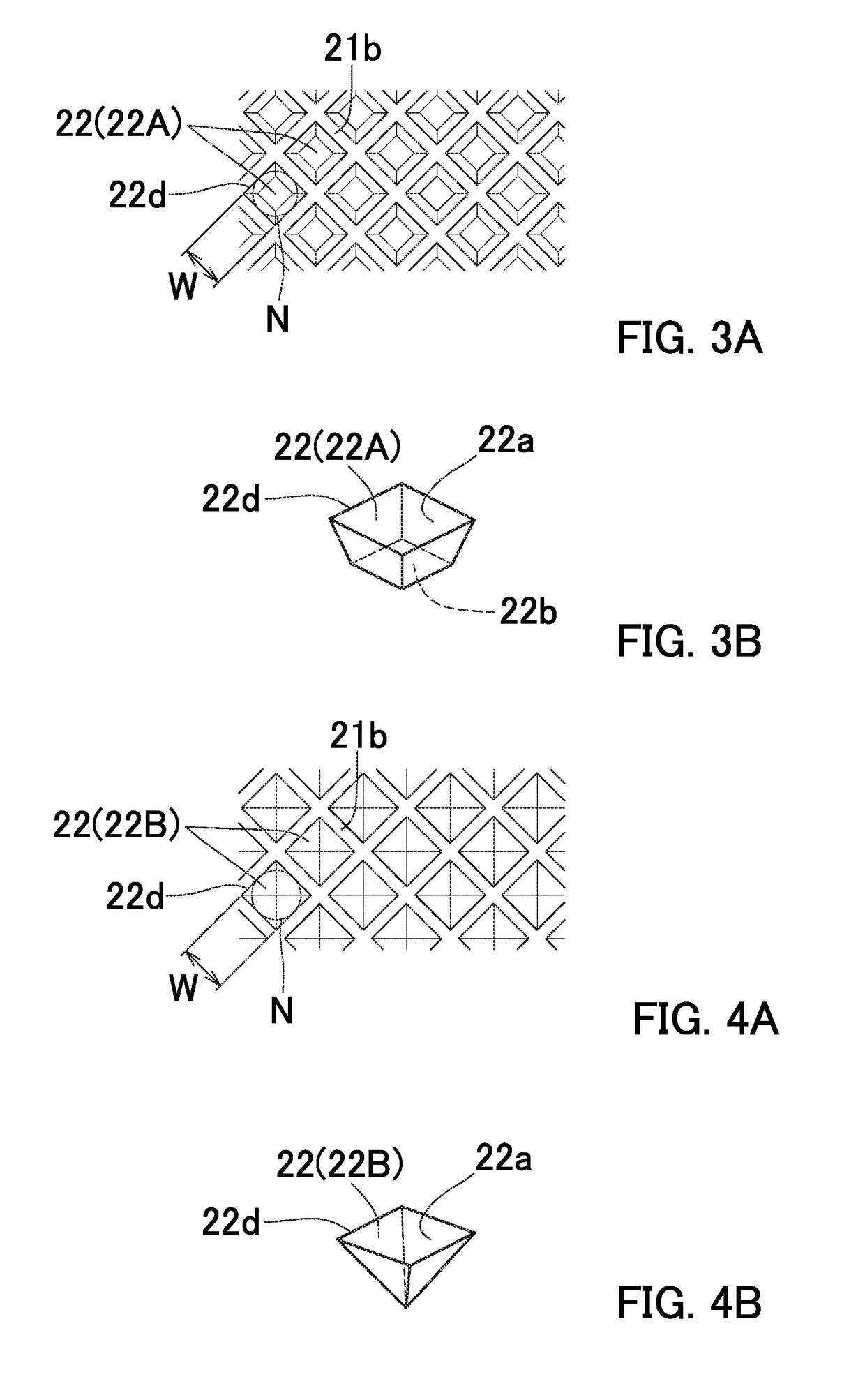Method for producing metal-carbon fiber composite material
a technology of metal-carbon fiber and composite materials, which is applied in the direction of coatings, layered products, chemistry apparatus and processes, etc., can solve the problems of large production equipment and complicated production work, and achieve the effect of ensuring the uniformity of the physical properties of the composite material in the planar direction, reducing production costs, and increasing thermal conductivity of the obtained composite material
- Summary
- Abstract
- Description
- Claims
- Application Information
AI Technical Summary
Benefits of technology
Problems solved by technology
Method used
Image
Examples
example 1
[0171]In Example 1, an aluminum-carbon fiber composite material was produced by the following procedure.
[0172]Carbon fibers having an average fiber length of 150 μm and an average fiber diameter of 10 μm (XN-100 manufactured by Nippon Graphite Fiber Co., Ltd.), a 3 mass % aqueous solution of polyethylene oxide (Alcox (registered trademark) E-45 manufactured by Meisei Chemical Industry Co., Ltd.) having an average molecular weight of 700,000 as a binder, an isopropyl alcohol as a solvent, water, a dispersant, and a surface conditioner were stirred and mixed, whereby a coating liquid was obtained. The mass of the binder contained in the coating liquid was 10% in terms of solid contents with respect to the mass of carbon fibers. The viscosity of the coating liquid was 1,000 mPa·s at 25° C.
[0173]The coating liquid was applied to the entire lower surface of a belt-like strip member of an aluminum foil (its material: A1N30) having a thickness of 20 μm and a width of 500 mm by a gravure co...
example 2
[0184]In Example 2, an aluminum-carbon fiber composite material was produced by the following procedure.
[0185]Carbon fibers having an average fiber length of 200 μm and an average fiber diameter of 10 μm (K223HM manufactured by Mitsubishi Plastics, Inc.), an acryl based resin as a binder, a propylene glycol ethyl ether acetate as a solvent, a dispersant, and a surface conditioner were stirred and mixed. Thus, a coating liquid was obtained. The mass of the binder contained in the coating liquid was 20% in terms of solid contents with respect to the mass of carbon fibers. The viscosity of the coating liquid was 700 mPa·s at 25° C.
[0186]The coating liquid was applied to the entire lower surface of the belt-like strip member of the aluminum foil (its material: A1N30) having a thickness of 20 μm and a width of 280 mm by a gravure coater at a coating rate of 30 m / min. With this, a coated foil strip member with a carbon fiber layer formed on the lower surface of the aluminum foil strip mem...
PUM
| Property | Measurement | Unit |
|---|---|---|
| diameter | aaaaa | aaaaa |
| length | aaaaa | aaaaa |
| length | aaaaa | aaaaa |
Abstract
Description
Claims
Application Information
 Login to View More
Login to View More - R&D
- Intellectual Property
- Life Sciences
- Materials
- Tech Scout
- Unparalleled Data Quality
- Higher Quality Content
- 60% Fewer Hallucinations
Browse by: Latest US Patents, China's latest patents, Technical Efficacy Thesaurus, Application Domain, Technology Topic, Popular Technical Reports.
© 2025 PatSnap. All rights reserved.Legal|Privacy policy|Modern Slavery Act Transparency Statement|Sitemap|About US| Contact US: help@patsnap.com



